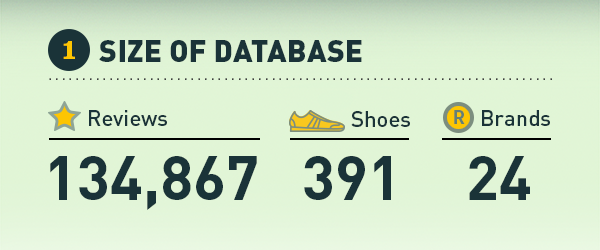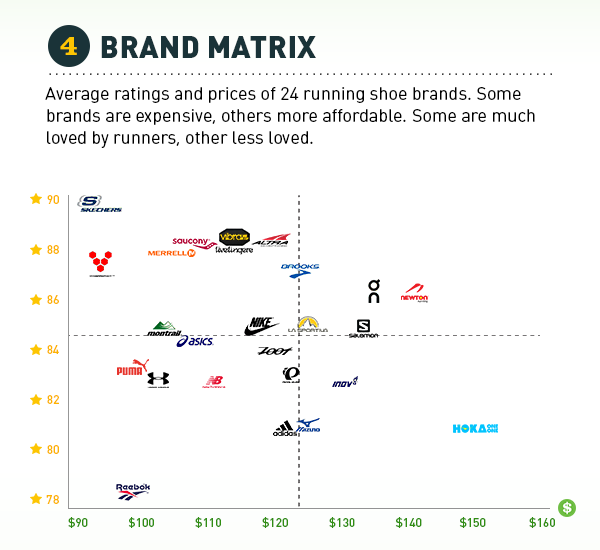[leadin]As an editor at GearJunkie, I’ve run in probably 100 pairs of shoes over the past four years. They’ve spanned the gamut on price, and a recent study has me wondering: Are expensive shoes better?[/leadin]
The running-shoe comparison website RunRepeat.com recently crunched the numbers on 134,867 customer reviews of 391 running shoes from 24 brands that rank shoes from one to five stars on satisfaction. The conclusion: Expensive running shoes are not better than more affordable ones. In fact, inexpensive running shoes are better rated than expensive ones.
Well, isn’t that a kick in the shorts? The study shows an inverse correlation between the cost and rating, with more expensive shoes rated worse. Check out the graph below, keeping in mind that this isn’t a scientific study and that perceived shoe quality very subjective.














